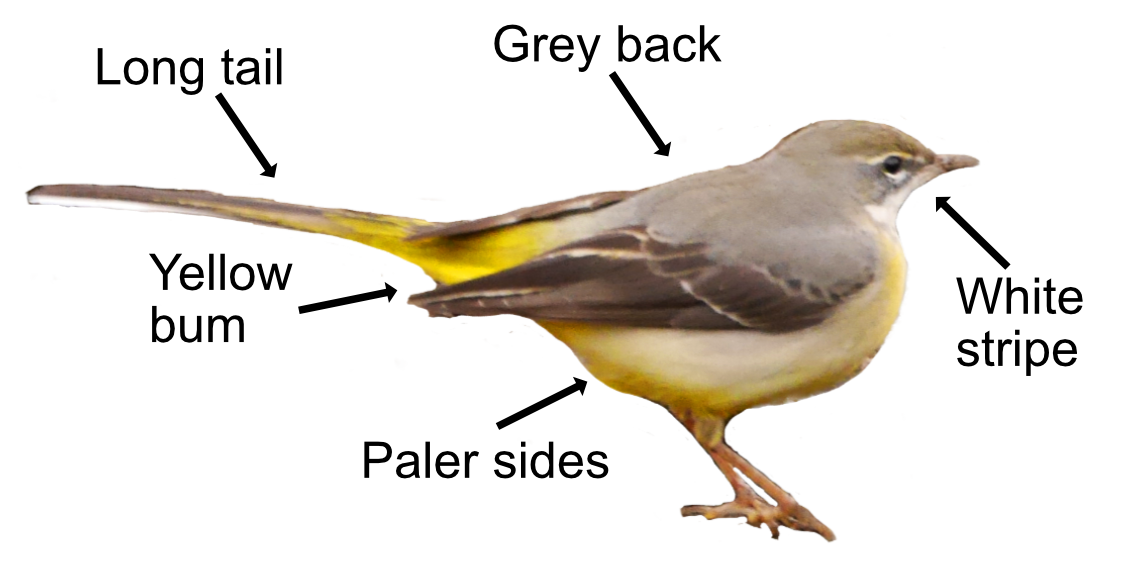
Another bird that wags its tail like mad. Its name is a little misleading as it looks more yellow than grey (but not to be confused with the Yellow Wagtail which is really yellow). It is usually seen singly or in pairs as it is a solitary little chap who likes the mountain streams, waterfalls, rock climbing, and the Sound of Music.
The Grey Wagtail is about the same size as the Pied Wagtail. The male has yellow under parts which are very bright so the mountain rescue teams can easily spot him. The upper parts are a blue grey with a white stripe above the eye and a black throat. The female has a pale throat and paler under parts. The Grey Wagtail has the longest tail of all the wagtails.
They have a low, bounding, deeply curved flight and perch on rocks or bushes. They do a distinctive song flight, where the male parachutes down from on high with open and fluttering wings. The Grey Wagtail sings mainly from March to May. The call is a reduced version of the Pied Wagtail's, lacking the "chis", and is only a very loud, piercingly sharp "tswick". This is because they need to be heard above the roaring noise of the water.

The Grey Wagtail eats insects, which it mainly picks up from the ground or from shallow water. They will even munch the odd tadpole or water snail on special occasions, like celebrating a good climb.
Nesting begins in April or May. The nest is built in a hole, crevice or other protected site such as under a bridge. Both parents build the nest using grass and twigs. The female then lines it with moss and hair. The 4-6 eggs hatch after 14 days. The young fly after another 14 days and depend on mum and dad for a further 14 days before going off to do their own tail wagging. The teenagers will sometimes come back to the nest to roost as there is no place like home and mum's cooking.
There are about 70,000 Grey Wagtails in Britain. They are found mainly in upland areas near fast flowing water where there are rocks and open ground. They have gradually increased their range in the past 150 years and have expanded into some lowland areas from the northern and western uplands. They are scarce in eastern England as they are not a big fan of the fens as there are no peaks to climb and a pylon is not the same thing. In winter, Grey Wagtails move down to a wide variety of lowland areas, and like the Pied Wagtail, can't resist a good sewage farm. Their numbers can fall in a harsh winter but they usually recover quickly.
Their Latin name is 'motacilla cinerea' where 'motacilla', like the Pied Wagtail, means 'tail mover 'and 'cincerea' is Latin for 'ash-grey' from 'cinis' meaning 'ashes'.